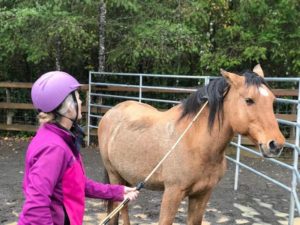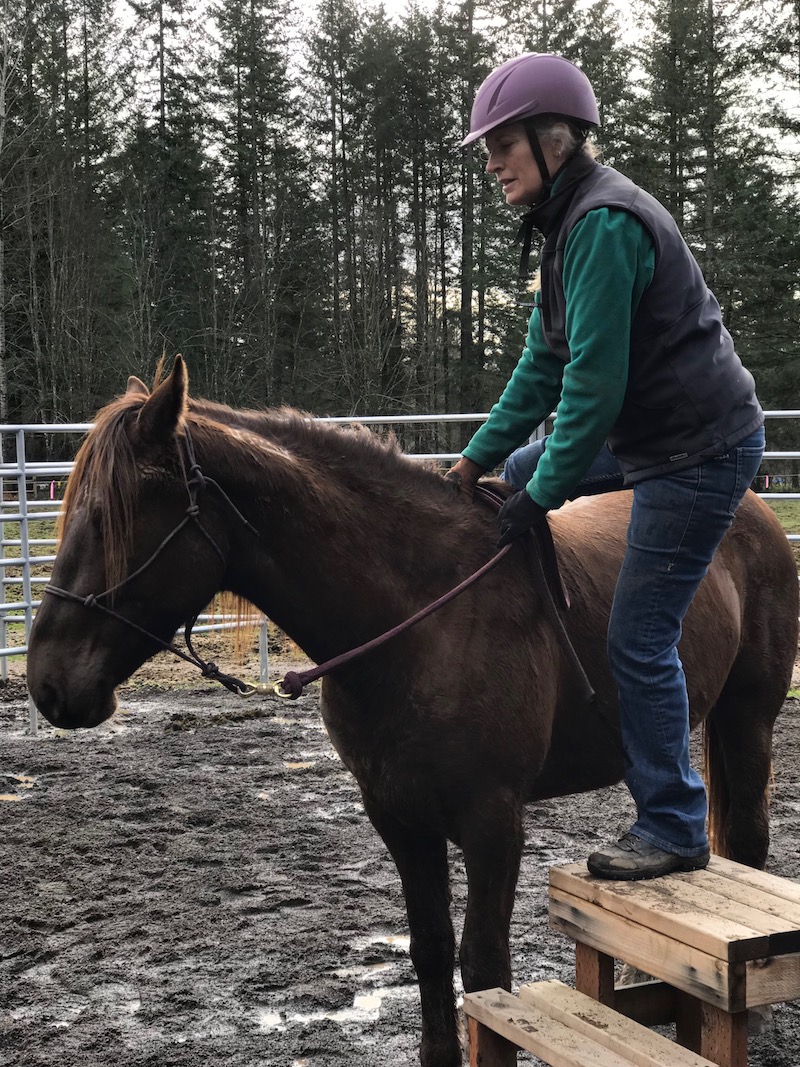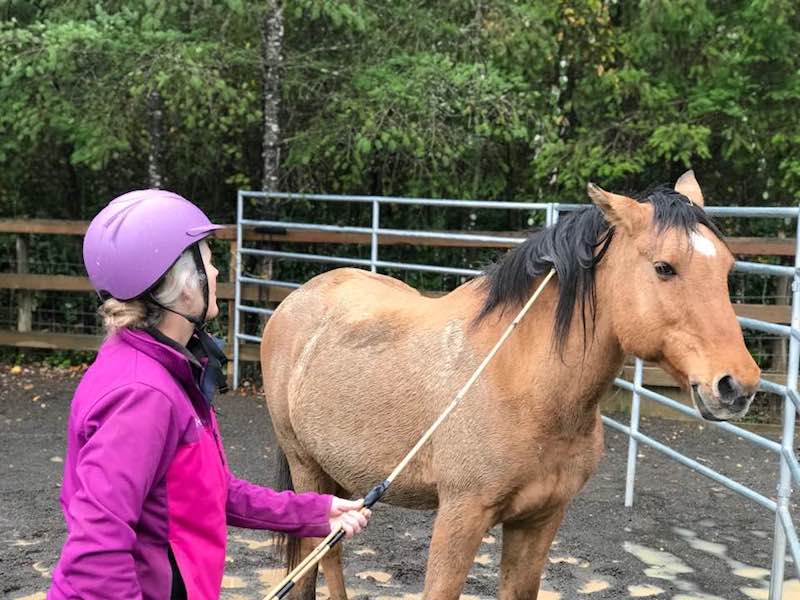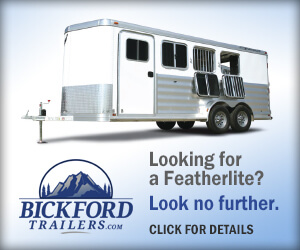One Woman’s Process for Obtaining and Training Wild Mustangs, Part 2
By Adrienne Devoe
Note: The author is providing information based on her knowledge and experience. In no way does she profess to have all the answers. She encourages the reader to do their research for the most complete information.

Once you get home with your wild mustang and unload it, you’re ready to begin the journey of taming your horse. Wild mustangs differ from domestic horses in that they have had little to no human interaction for most of their life.
Your mustang, especially if born in the wild (as opposed to being born in the holding corrals) will have very refined social herd dynamics and a heightened sensitivity to noise and body movement. This can work in your favor when you start working with him, but it can also prove challenging if you are not careful with your timing.
If you have never worked with a wild mustang before, it’s very important that you do some preparation beforehand by reading, watching videos, or talking to experienced mustang trainers such as ones who have participated in events like the Teens and Oregon Mustangs Competition (www.teensandoregonmustangs.org).
The first few interactions with your mustang are critical for establishing a bond of trust. That first touch with your mustang is magical. This can happen quickly, take several days or an even longer time depending on the horse and your approach. Be aware that there is no right amount of time other than the time it takes to do the best job you can. Always work with your safety and the well-being of your mustang in mind.
There are many methods to working with a wild horse, some more successful than others. But with perseverance and the humility to ask for help when stuck, your mustang will get tamed. When you start, make sure you have a big enough pen that your mustang doesn’t feel cornered. A cornered mustang can be a dangerous one! Also make sure your pen is sturdy and strong enough to withstand 1000 pounds being thrown against it. Your pen will need to be attached to your mustang’s living space as you will not be able to lead him anywhere, even if he has a halter and lead.
One method I like to use in the beginning is the bamboo pole. The pole acts as an extension of your hand; after time spent touching the mustang with the pole, you eventually move in closer and closer until you can replace the touch of the pole with your hand. The best place for that first touch is usually on the neck, an area of the mustang’s body that causes the least defensive reaction.
When you first physically touch your mustang, make sure you rub or gently scratch, similar to what another horse would do (with the use of its lips or teeth). Keep the interaction short and be the one that pulls away first. This will cause the mustang to seek interaction with you rather than draw away from over-stimulation. Keep these sessions short and frequent, slowly increasing the amount of time rubbing and expanding the areas where you make the contact, such as the face and head, shoulders, and back until you feel your mustang is relaxed with this contact.
If your mustang came with a halter and lead, work on pressure and release concepts to get the mustang to turn toward you and start leading. Always break training sessions down into simple steps of short duration as to not overwhelm your mustang and to allow it to grow accustomed to your handling. If your mustang did not come with a halter or has rubbed it off, you will need to start getting it used to having both of your hands up around its head and face so that eventually you can slip a halter on it while rubbing.
Wait until your mustang is comfortable with your presence and repeated touching before working on the chest, feet and hindquarters as these areas can elicit defensive reactions. And with any handling of your mustang, always proceed with caution yet confidence, and break things down into simple steps.
Once you can touch your mustang all over its body (without it being tense or apprehensive) and you are able to confidently walk up to your mustang without him turning in fear, and are able to apply pressure and release using a halter, your mustang is now similar to an un-started domestic horse. Just keep in mind that a mustang has a very heightened sense of self preservation and fight or flight instinct. If some tactic you’re trying doesn’t seem to be working, reach out for help or do more research.
If all has gone well up to this point in your mustang’s taming, you are ready to start basic ground work training that will eventually lead to a nice saddle horse.

Adrienne Devoe is a website developer who has a passion for working with horses. She grew up on the East Coast doing pony club and since that time has owned and trained many horses and has thousands of riding hours under her belt in arenas and on the trails. Later in life she developed a strong interest in dressage and has pursued it with dogged determination, showing up to third level on her Irish Sport Horse and aiming for Grand Prix competitions.
Recently she inadvertently discovered mustang training while building a website for the Teens and Oregon Mustangs (TOM) program. Now, besides dressage, she is working with her own wild mustang with the TOM program as a competitor. The year before, she adopted two beautiful mustangs from the TOM program that have stolen her heart and turned her into an advocate of the versatility, resilience, strength and ability of the American Wild Mustang.





